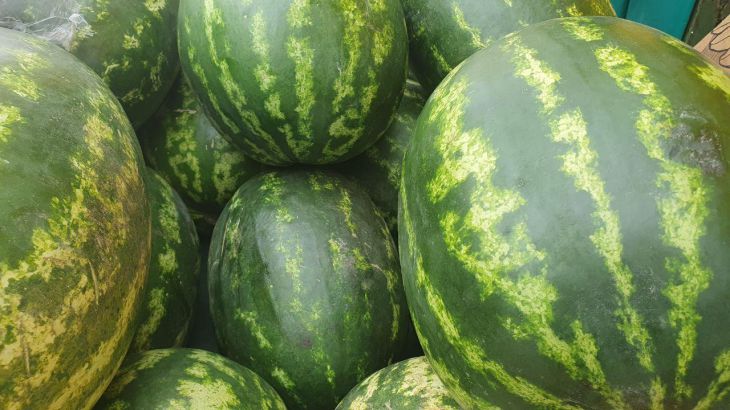How to Grow Large and Sweet Watermelons: Basic Rules of Planting and Care
Although watermelon is a close relative of cucumber, there are significant differences in their development stage and agricultural technology.
To please yourself with fresh ripe fruit pulp you need to put in a lot of effort.
Basic rules for planting and pinching plants
A special joy for the gardener is the high drought resistance of this plant. Even in hot weather, without watering, the watermelon can withstand drought for weeks due to the peculiarity of the structure, vegetative and root system. But there is one downside, says Anastasia Kovrizhnykh .
Summer in our latitudes is too short, so watermelon requires care for accelerated growth. The soil for this type of crop should be well fertilized, which promotes rapid growth.
When planting, the holes should be 60-80 cm apart. Two roots are planted in each hole.

In order to increase the growth of lateral shoots (where female flowers are most often formed), it is necessary to pinch the growth point of the main stem.
You need to pinch when there are already 4-5 true leaves. If a couple of fruits have formed on the side shoots, you can pinch again, but the subsequent ovaries will not have time to ripen anyway.
Plant fertilizing
During the entire growth period, the plant needs to be fed. The best option would be mulch with used tea (without sugar).
Mulching itself will protect the root system, which is almost on the surface, from burns and will serve as nutrition during its decay. Thus, throughout the entire time, the watermelon will slowly feed on these reserves.
You can "water" it with manure infusion 1-2 times per season. If the manure is fresh, it should be diluted in 20 parts water to 1 part liquid and left to ferment for about a week. Before watering, dilute in half and feed each bush with 1 liter of this composition.
If "dried" manure or humus is used, it is placed in a gauze bag and lowered into a barrel of water. After a week, it is squeezed out and thrown into the compost heap.
The liquid in the barrel should be the color of weakly brewed tea. If the color is darker, dilute with water. This "tea" can not only be used to feed, but also to spray the watermelon.
Excessive feeding leads to the destruction of minerals and weakens the plant, so everything should be in moderation.
It is worth remembering that when the fruits reach the size of a tennis ball, watering of watermelons should be practically stopped. Despite the fact that during the entire previous period it was favorable for their growth.
How to determine the ripeness of a berry
The main and basic sign of ripeness of a watermelon is the appearance of a tendril right at the stalk. If it is dry, then the watermelon is ripe.
If it remains green, then the pulp is also still green. A tendril that begins to dry out indicates pink pulp.
Many people try to determine ripeness by tapping. This method also works. When a berry is ripe, the sound will be dull, while when it is green, it will be more ringing.
Both adults and children are happy to be near a bed of growing watermelons and wait for them to ripen. And with proper care and attention, they will give a high harvest.
Earlier we talked about fighting aphids in the garden.
